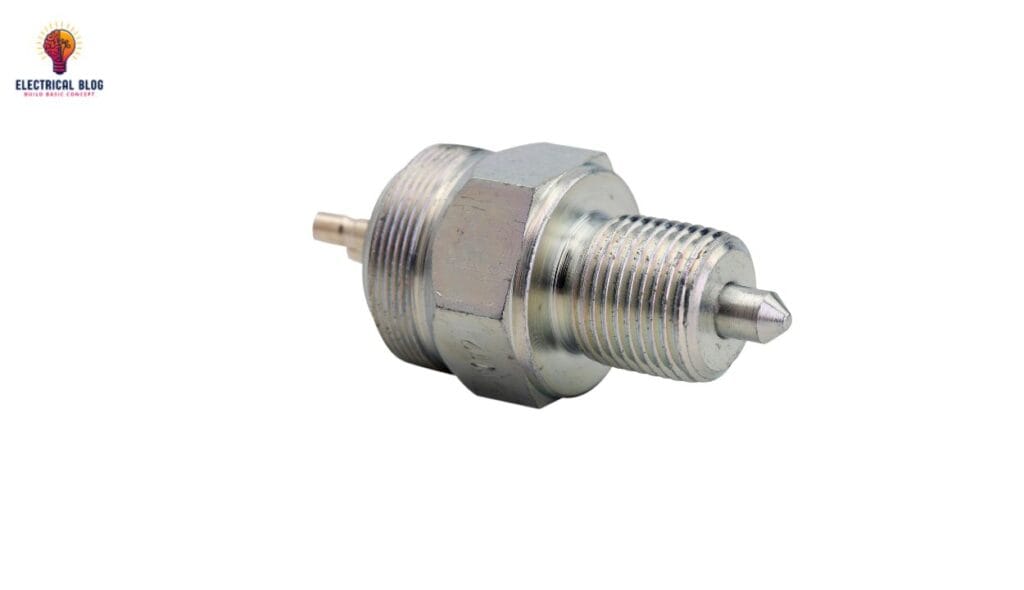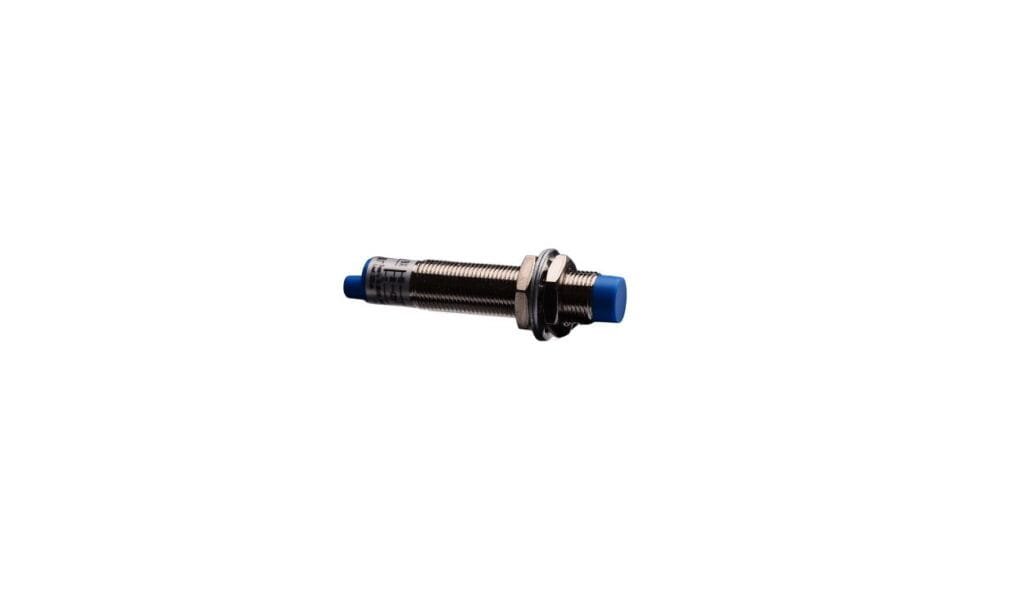Introduction
A transformer generates heat during operation, and if not controlled, it can lead to degradation of insulation, causing damaging effects on various parts. The rapidly rising temperature may result in failure, making proper removal and treatment of heat necessary for efficient operation. Effective cooling methods of a transformer ensures a longer life and higher efficiency, preventing an increase in wear and maintaining system reliability. In this article, we cover different cooling methods of a transformer to help keep transformers operating safely and efficiently.
Importance of Cooling in Transformers
When a transformer runs continuously, it naturally produces heat due to copper losses in the windings and iron losses in the core. If this heat isn’t managed properly, it can impact the operation and efficiency of the system. That’s why efficient cooling is essential to ensure the safe removal of excessive heat, preventing overheating and extending the lifespan of the equipment. You can also read transformer maintenance.
Different Ways to Keep a Transformer Cool
Depending on the type of transformers, different cooling methods of a transformerF are used. Dry-type units rely on cooling methods.
Air Natural (AN)
Air Forced (AF)
While oil-immersed models use techniques like:
Oil Natural Air Natural (ONAN)
Oil Natural Air Forced (ONAF)
Oil Forced Air Forced (OFAF)
Oil Forced Water Forced (OFWF) ensures efficient temperature control.
In some cases, an Air Blast (AB) system is also used to improve airflow.
Air Natural (AN) Cooling
Air Natural (AN) cooling is commonly used in dry-type and self-cooled transformers where the natural circulation of surrounding air removes heat efficiently. This method is ideal for small transformers with low voltage, typically up to a few kVA. The windings are protected from mechanical damage using a sheet metal enclosure, ensuring durability and safety.
Air Forced (AF) or Air Blast (AB) Cooling
Air Forced (AF) or forced-air cooled transformers use a fan to push filtered cool air through the core and windings, ensuring better cooling. This method provides a continuous blast of air, making it ideal for dry-type transformers with ratings of up to 15 MVA. The forced airflow improves heat dissipation, allowing the transformer to handle higher loads efficiently.
Oil Natural Air Natural (ONAN) Cooling
In oil-immersed transformers, dielectric oil serves as both a cooling medium and an insulating medium to manage heat. As the core and windings get hot, the heat is transferred to the oil, which becomes lighter and rises to the top, while cool oil moves to the bottom of the transformer tank.
This natural circulation helps maintain temperature balance inside the sheet steel tank. The heated oil transfers its heat to the walls, which then dissipate it to the surrounding air through radiation and convection. This process is highly effective for medium-rated and large-rated transformers without requiring external cooling.
As the natural oil air natural method continues, the cooled oil falls back down, repeating the cycle. This passive cooling system keeps transformers efficient and prevents overheating, making it a widely used method for reliable performance.
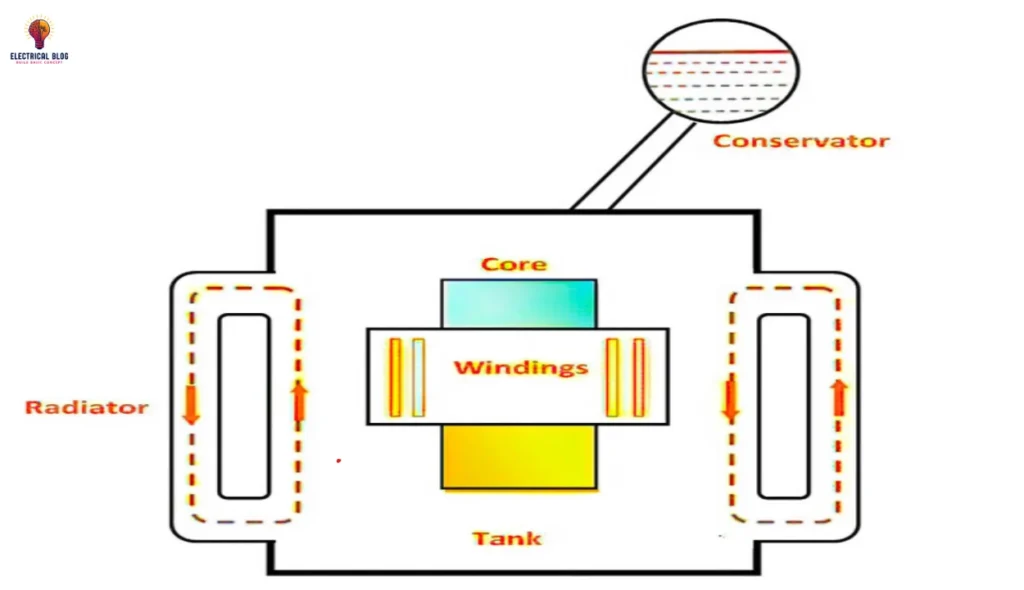
Oil Natural Air Forced (ONAF) Cooling
In oil natural air forced cooling, heat is generated in the core and windings of the transformer and then transferred to the oil. Through natural circulation, the heated oil moves to the tank and radiator, where forced air cools it down. A blast of air passes over cooling elements like tubes, fins, and walls to enhance heat dissipation. This method is ideal for large transformers, efficiently handling loads of up to 60 MVA.
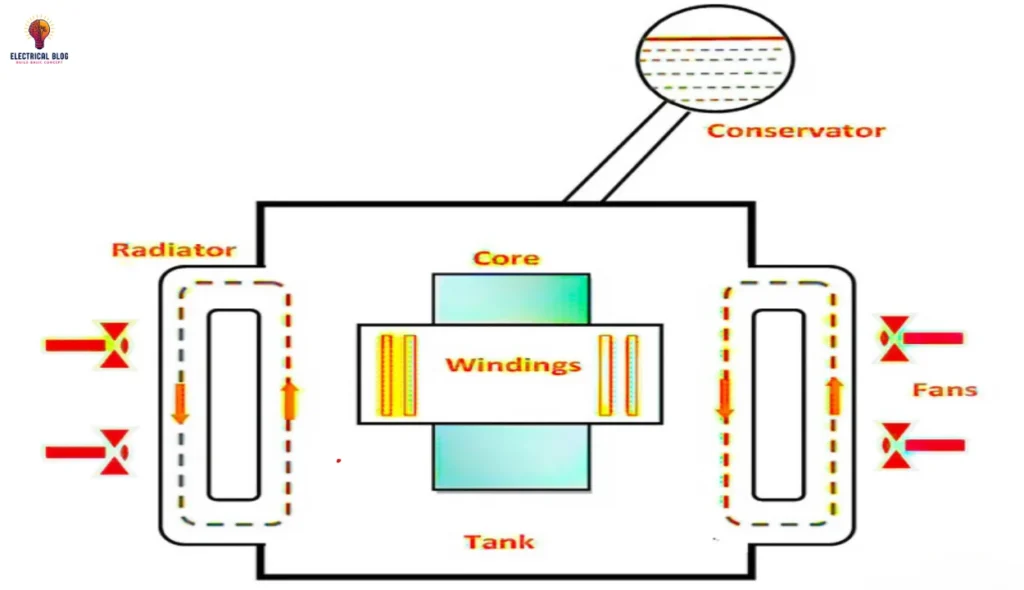
Oil Forced Air Forced (OFAF) Cooling
In higher-rated transformers, heated oil is circulated from the top of the transformer tank to a heat exchanger, where a fan creates a blast of air to cool it down. The cool oil is then returned to the bottom, ensuring continuous cooling. This method is widely used in substations and generating stations, where efficient heat management is crucial.
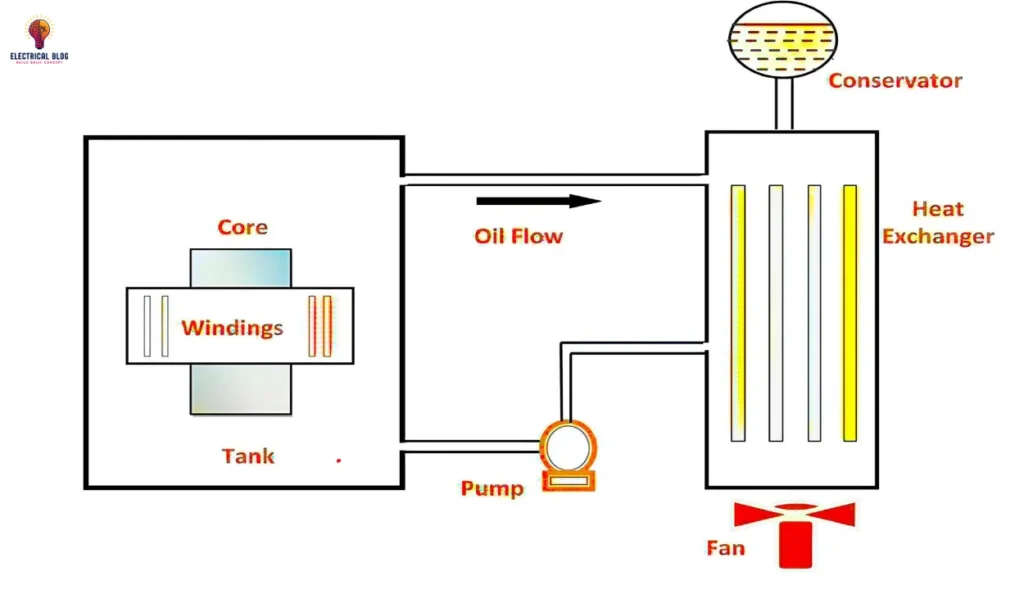
Oil Forced Water Forced (OFWF) Cooling
In oil-forced water-forced cooling, heated oil is circulated from the top of the transformer tank to a heat exchanger, where pressurized water helps separate the heat from the oil. The cool oil is then returned to the bottom, ensuring efficient cooling. This method is ideal for very large transformers with 100 MVA ratings, commonly used in generating stations.
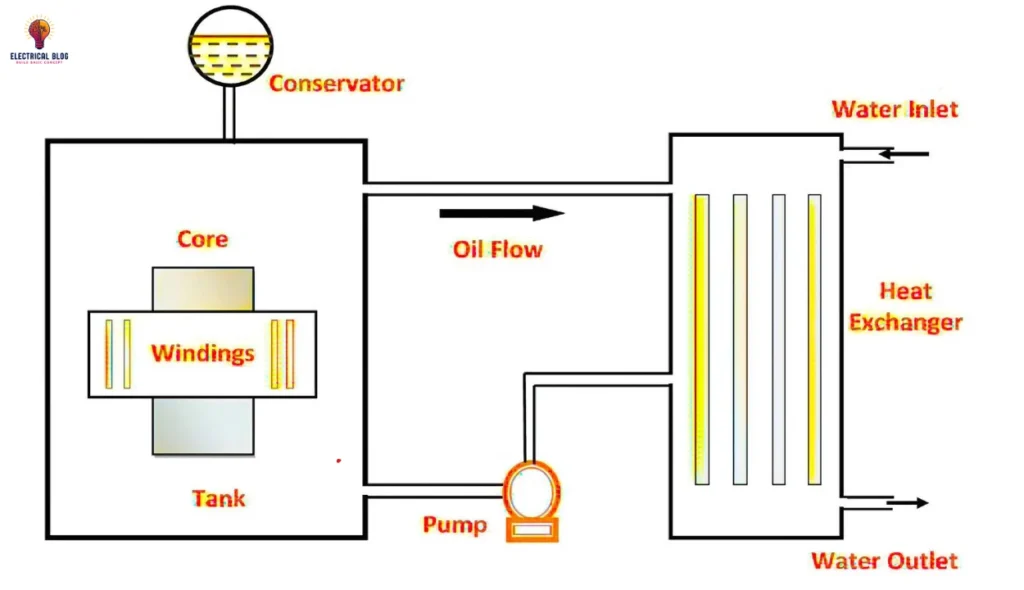
Conclusion
Proper cooling of a transformer is essential to maintain its efficiency, prevent overheating, and extend its lifespan. Uncontrolled heat from copper losses in the windings and iron losses in the core can lead to system failure and reduced performance. By implementing effective cooling methods of a transformer, the operation of the transformer remains stable, ensuring reliable and long-term functionality.

